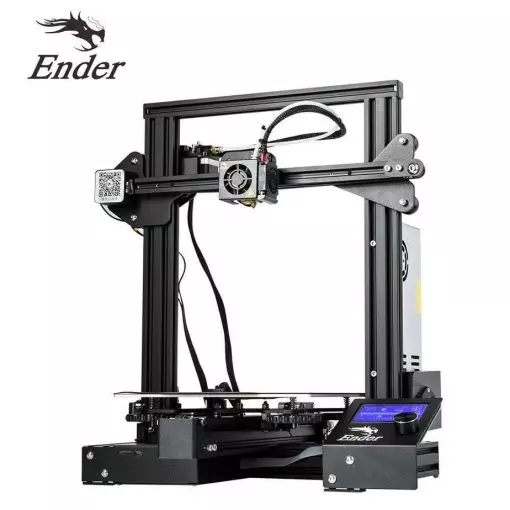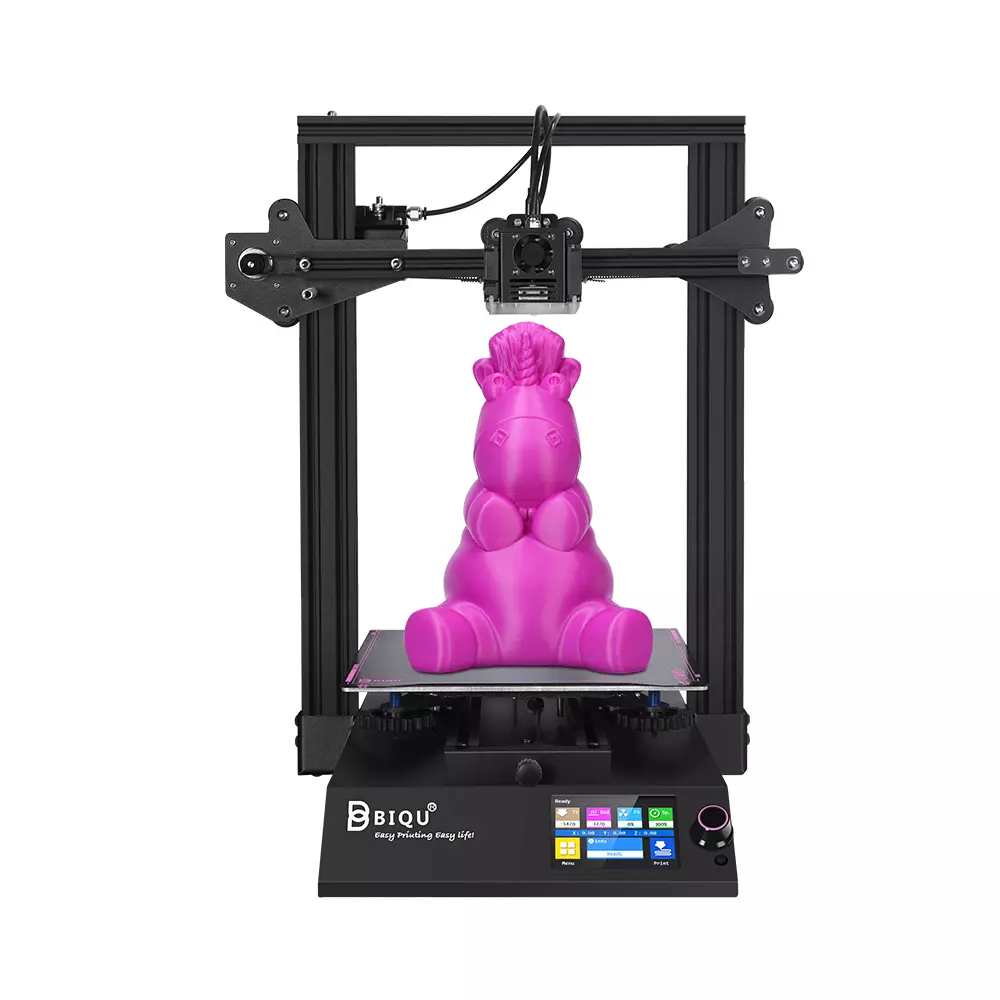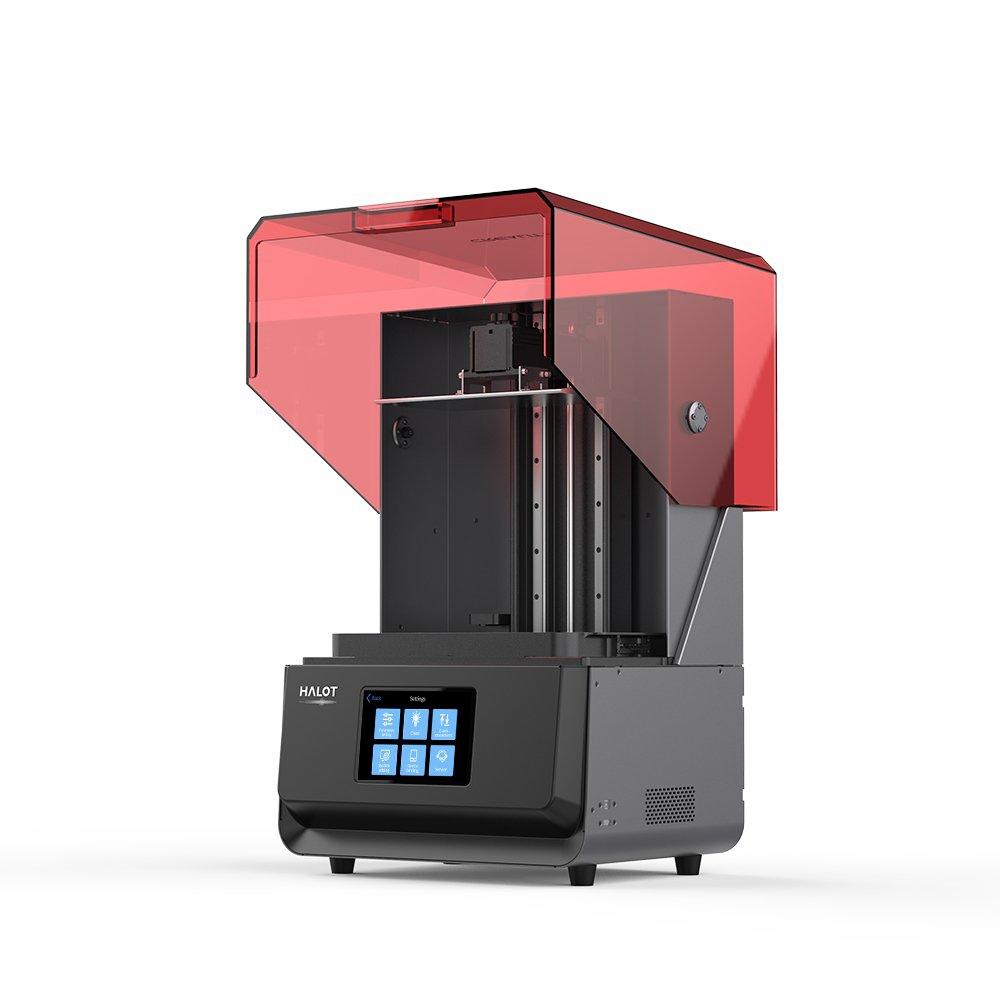Compare Ender 3 vs BIQU B1 vs Halot Max
Comparison between the best 3D printers
Choose the best 3D printer at the best price. The cheapest 3D printers are here.
Buy a 3D printer here with 3D Fila.
 |
 |
 |
|
| Model | Ender 3[BUY Ender 3] |
BIQU B1 |
Halot Max[BUY Halot Max] |
| Printing Material | Filament | Filament | Resin |
| Estimated price | $210,00 | $269,00 | $3000,00 |
| Fabricante | Creality 3D | BigTreeTech | Creality 3D |
| Release Year | 2018 | 2020 | 2021 |
| Print Volume [mm] | 220x220x250 | 235x235x270 | 293x165x300 |
| Printer Size [mm] | 440x440x465 | 412x402x492 | 480x387x770 |
| Weight [kg] | 6,62 | 8,00 | 32,5 |
| Power Loss Recovery | NO | YES | NO |
| Maximum Resolution [mm] | 0,1 | 0,1 | 0,03 |
| Processor | 8 bits | 32 Bits BTT SKR V 1.4 | |
| Display | Mono | Touchscreen TFT 3,5'' | Display touchscreen 5'' |
| Power Supply | 24V / 270W | 24V / 360W | |
| Connectivity | SD / USB | SD / USB | SD / USB / Wi-Fi |
| Operating systems | Windows, Mac, Linux | Windows, Mac, Linux | Windows, Mac, Linux |
| Date of registration in the system | 2021-04-13 | 2021-04-14 | 2022-11-04 |
| Release date | 2018 | 2020 | 2021 |
| Extra features | The Ender 3 V1 is a DIY assembly 3D printer, a sales leader since 2017, standing out for its cost-benefit. With a wide printing capacity, it has a CNC machined structure for precision and stability. It offers high-precision prints with low noise, thanks to its innovative V-profile and pulleys. It has a self-adhesive magnetic platform for easy removal of models and excellent adhesion. The Ender 3 heats up quickly, reaching 100°C in 5 minutes, ideal for agile prints. It includes protection against power failures, allowing you to resume printing after interruptions, saving time and material. | The BIQU B1 is an advanced 3D printer with a silent 32-bit BTT SKR V1.4 motherboard and ARM Cortex-M3 CPU, offering DIY interfaces (I2C, SPI, WiFi) and dual Z-axis. Its dual BTT B1 TFT35 V3.0 operating system allows real-time monitoring and multiple printing modes, including G-code visualization effects. It stands out for its BIQU SSS (Super Spring Steel), ensuring easy model adhesion and simplified removal, with the possibility of using it on both sides. It includes a filament sensor, automatically pausing printing in case of filament breakage. The multicolored RGB lights integrated into the hotend allow you to view the printing status even at night. Additional notes include the need for a BIQU-specific Type-C cable and extra interfaces for smart filament sensor and BL Touch. | The Halot Max printer stands out for its large print size (293 x 165 x 300 mm) and uses SLA technology. It has an integral light source for improved accuracy and a strong core with an advanced operating system. Its Z-axis module ensures high precision, supported by efficient slicing software. The machine offers online OTA updates and boasts an adjustable layer thickness between 10 and 200 microns. Its XY-axis resolution is 3840*2160, with 0.05 mm accuracy, and an integral 405nm light source. The printer includes a 5" touchscreen and multiple connectivity options, such as USB, Creality Cloud, and HALOT BOX WiFi. With cutting-edge technology, the Halot Max is ideal for printing small models with uniform precision, thanks to its self-developed lighting system and stable printing mechanism, which includes dual linear guides, ball screws, and an intelligent brake system. |
| Support for multiple colors and materials (AMS and CFS) | NO | NO | NO |
Notes * |
|||
| Cost-benefit | 6 / 10 | 7 / 10 | 5 / 10 |
| Hardware | 0.5 / 10 | 2 / 10 | 1.2 / 10 |
| Screen | . | . | . |
| Print volume | 3 / 10 | 3 / 10 | 3 / 10 |
| Performance | 1 / 10 | 1 / 10 | 9 / 10 |
| [BUY Ender 3] | [BUY Halot Max] |
Conclusion |
| In comparing the Ender 3, BIQU B1, and Halot Max 3D printers, several key factors emerge that can assist potential buyers in making an informed decision based on their specific needs and budget. The **Ender 3**, known for its cost-effective design, is an excellent choice for beginners or hobbyists looking for a reliable, easy-to-assemble printer. While it offers decent print volume and quality, its lack of advanced features, such as power loss recovery, makes it less versatile than the others. The emphasis on affordability and accessibility results in a solid cost-benefit ratio, although its hardware capabilities are more basic in comparison. The **BIQU B1** positions itself as a more advanced option with enhanced technology, including a silent motherboard, dual Z-axis, and real-time monitoring features. With additional functionalities such as a filament sensor and a dual-side build plate, it offers notable improvements in user experience and print reliability. However, its price point may not be as appealing for those strictly seeking a budget-friendly option. Despite slightly better hardware than the Ender 3, its performance still doesn't match the precision offered by higher-end models. On the other hand, the **Halot Max** stands out as a high-end printer with exceptional performance, particularly in the realm of precision and detail, thanks to its SLA technology. Its advanced features, including a large print area and integrated light source, make it ideal for professionals needing high-quality outputs. However, its considerable price tag is a significant investment that might only be justifiable for dedicated users or businesses. In conclusion, if budget and ease of use are your primary concerns, the **Ender 3** remains a solid entry-level option. For those seeking a balance between enhanced features and affordability, the **BIQU B1** provides a satisfactory middle ground. Conversely, if you require professional-grade results and have the financial means, the **Halot Max** is undoubtedly the most capable option, although it may not represent the best cost-benefit ratio for casual users. Ultimately, the choice will hinge on the user’s requirements, intended applications, and budget. |

